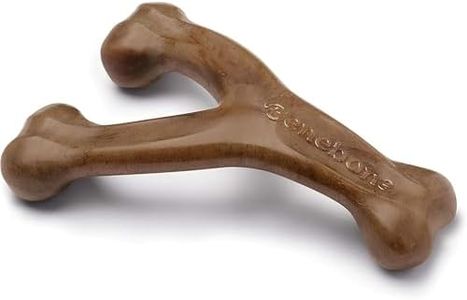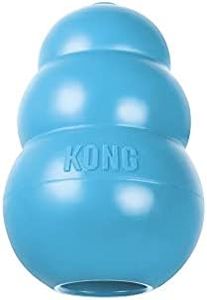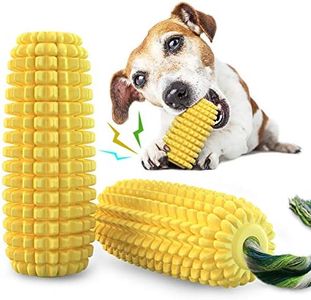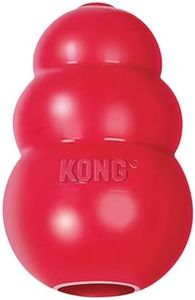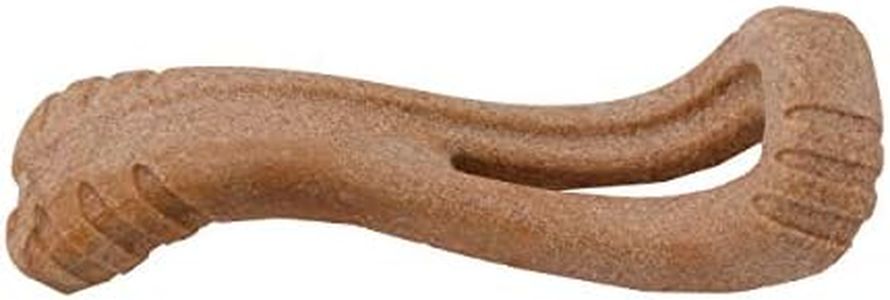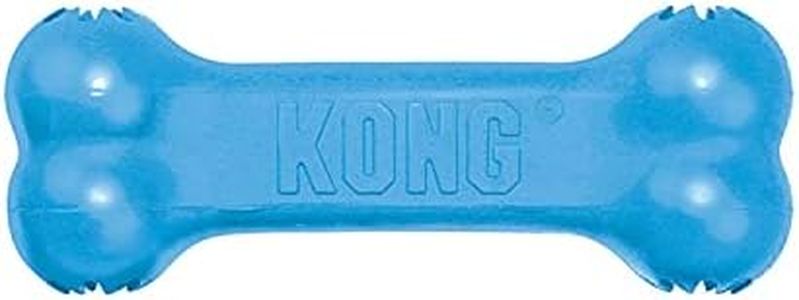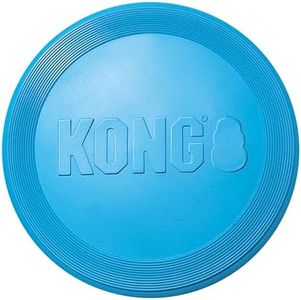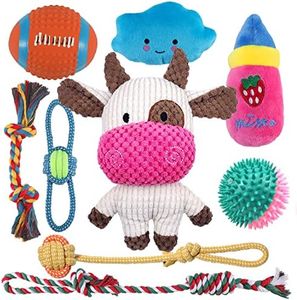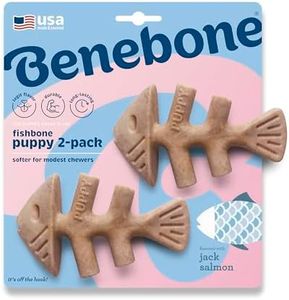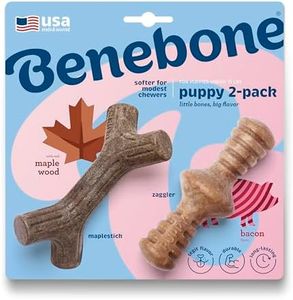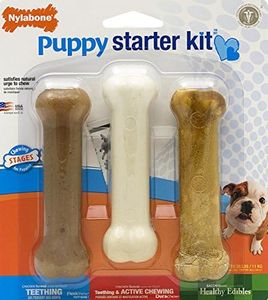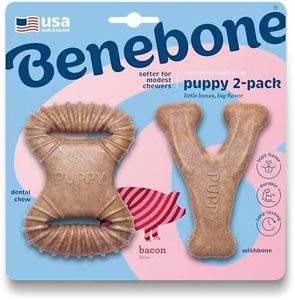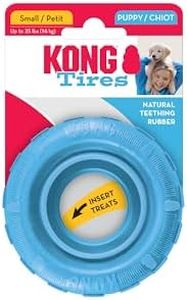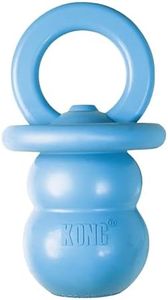We Use CookiesWe use cookies to enhance the security, performance,
functionality and for analytical and promotional activities. By continuing to browse this site you
are agreeing to our privacy policy
10 Best Teething Toys For Puppies
From leading brands and best sellers available on the web.Buying Guide for the Best Teething Toys For Puppies
Choosing the right teething toy for your puppy is important for their health and happiness. Puppies, just like babies, go through a teething phase where their gums can get sore, and they have a natural urge to chew. A good teething toy will satisfy that urge, while also protecting your furniture and belongings from being chewed on. The key is to find a toy that is safe, durable, and suited to your puppy’s size and chewing style. When picking one, consider your puppy’s age, breed, and play habits. Some toys are better for gentle chewers, while others are made for puppies that chew non-stop. It’s also wise to make sure the toy is easy to clean, as puppies tend to put everything in their mouths. Always supervise your puppy with a new toy at first to make sure it’s a good match and to prevent any accidents.Material SafetyThe material safety of a teething toy is crucial because puppies will inevitably bite, lick, and chew whatever you give them. You want to ensure the toy is made from non-toxic materials that won't harm your pup if ingested in small amounts. Common safe materials include rubber, silicone, and certain types of soft plastics, but always look for labeling that indicates the toy is free from harmful chemicals like BPA or phthalates. Soft rubber is good for most puppies, while harder materials might be better for more aggressive chewers. Picking the safest material is especially important for very young puppies, as their immune systems are still developing.
Size and ShapeThe size and shape of a teething toy matter because toys that are too small can be a choking hazard, and toys that are too large may be uncomfortable or intimidating for your puppy to handle. Generally, a teething toy should be large enough that your puppy cannot swallow or choke on it but small enough for them to grip comfortably in their mouth and with their paws. Shapes vary from standard bones and rings to more complex designs with ridges and nubs for gum massage. Think about your puppy’s current size and how big they’re likely to get during the teething phase, and choose a toy that fits within that range to ensure safety and comfort.
DurabilityDurability determines how long the toy will last and how well it stands up to your puppy’s chewing. Some puppies are gentle and only need a soft, flexible toy, while others are determined chewers who can destroy a toy in minutes. Durable toys usually feature thicker, tougher materials and reinforced designs. You should assess your puppy’s chewing strength—if you find your puppy quickly ruins softer toys, it’s a sign to move up to something stronger. However, be cautious about picking toys that are too hard, as those can damage developing teeth.
TextureTexture is important when it comes to soothing sore gums and keeping your puppy interested. Different textures, such as bumps, ridges, and grooves, give your puppy something to massage their gums on and engage their senses. Some toys offer a combination of textures to keep things interesting. For puppies in the thick of teething, toys with more pronounced textures can help relieve discomfort. Very smooth toys might not provide as much relief for sore gums, while too-rough surfaces can hurt sensitive mouths. Think about your puppy's preferences—some like soft and squishy, others prefer a bit more resistance.
Ease of CleaningTeething toys need to be cleaned frequently because they spend a lot of time in your puppy’s mouth and can collect dirt and bacteria. Toys that are dishwasher safe or can be easily washed with soap and water are the best choices. If a toy has a lot of small nooks and crannies, make sure you can reach them to clean properly. Choosing an easy-to-clean toy is especially important for growing puppies to help prevent them from getting sick from bacteria buildup.
